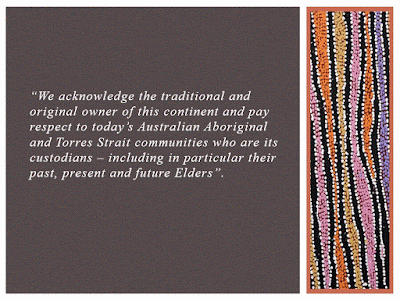Education for Sustainability Learning Opportunities
The
Australian Curriculum and Assessment Reporting Authority refers to
Sustainability as an “ongoing capacity of Earth to maintain all life” (Australian
Curriculum Assessment and Reporting Authority [ACARA], 2014). In conjunction with
the Humanities and Social Sciences curriculum your child will be given opportunities
to explore sustainable living through an inquiry-based approach (Reynolds,
2014). Within the sustainability unit, students will participate in
authentic learning experiences through the exploration of waste management. This involves students applying their learning in the real world. Hands-on learning
experiences have been proven to promote greater motivation and satisfaction as
they enable students to put the theory into practice, provoking
further discussions that perhaps would not have been explored in the classroom
environment (Carr, 2015).
Throughout term three your child will explore waste
management by creating a worm farm that will help educate them about recycling
and life cycles (ACARA, 2016a:2016b). Students will be introduced to the
important role worms play in the soil and the ways they benefit the garden in
processing organic waste. Beginning with a KWL chart (Figure 1) to discover
students prior knowledge, your child will list what they know about worms and
worm farms and what they would like to know. At the end of the unit students
will be provided with opportunities to revisit their KWL chart to complete the
final column, what have they learnt. Introducing your child to worm
farms will be done by showing them a YouTube video. This pedagogical approach
will be used as research has shown that visual cues facilitate thinking and
problem solving, assist with mastery learning, are inspiring and engaging and
create authentic learning opportunities (Willmot, Bramhall & Radley, 2012).
As a class, students will assemble the worm farm and will be required to continue
to manage it over the course of the term. During this time students will be
required to document the changes found within the worm farm. Putting your child
in charge of the management of the worm farm will provide them with a sense of responsibility
for their own actions and for the world they live in (Gilbert & Hoepper, 2014).
Figure 1 - KWL Chart
Video 1 - How to start a worm farm in 4 steps
The Melbourne Declaration on Educational Goals for Young
Australians (2008), identified
the importance of sustainable patterns of living, therefore its vital that
students develop the key understandings about the environment and explore ways
of improving waste management to help build an understanding around a
sustainable future (ACARA, 2016a) Using enriching experiences to explore the
concept of Sustainability can enable students to develop knowledge, skills,
values and motivations for action in preparing them to meet the sustainability challenges of the future.
I encourage you as
parents/carers to continue to promote and support your child’s learning in this
area by introducing waste management practices at home. This could be as simple
as having your child put disposable items in the correct rubbish, recycle or
green bins. You may like to create your own worm farm or implement your own
recycling system. These suggestions can work towards a more sustainable living.
Figure 2 - Links to the Australian Curriculum
References
Australian Curriculum,
Assessment and Reporting Authority [ACARA]. (2014). Sustainability.
Australian Curriculum Assessment and
Reporting Authority. (2016a, December 16). The
Australian Curriculum: Geography. (Version 8.3), all year levels, all curriculum
elements, all curriculum dimensions. Retrieved from http://www.australiancurriculum.edu.au/download/f10
Australian Curriculum Assessment and
Reporting Authority. (2016b, December 16). The
Australian Curriculum: Science. (Version 8.3), all year levels, all
curriculum elements, all curriculum dimensions. Retrieved from http://www.australiancurriculum.edu.au/download/f10
Carr, E. (2015). Making the most out of school trips. Retrieved from http://www.brightknowledge.org/knowledge-bank/bright-voices/bright-voices-2012/emmeline-carr/making-the-most-out-of-school-trips
City of Sydney. (2015,
May 14). How to start a worm farm in 4
steps: vermiculture made easy [Video File]. Retrieved from https://www.youtube.com/watch?v=Berf8Sy0SCI
Gilbert, R. & Hoepper, B. (2014). Teaching Humanities and Social Sciences:
History, Geography, economics & Citizenship. (5th Ed.) VIC: Cengage
Learning Australia.
Ministerial Council on Education,
Employment, Training and Youth Affairs. (2008). Melbourne declaration on educational goals for young Australians.
Retrieved from http://www.curriculum.edu.au/verve/_resources/National_Declaration_on_the_Educational_Goals_for_Young_Australians.pdf
Reynolds, R.
(2014). Teaching humanities and social sciences in the primary school (3rd
ed.). Melbourne, Vic: Oxford University Press.
Willmot, P., Bramhall,
M., & Radley, K. (2012). Using
digital video reporting to inspire and engage students. Retrieved from http://www.raeng.org.uk/education/hestem/heip/pdf/Using_digital_video_reporting.pdf





Hi Shae,
ReplyDeleteI really enjoyed reading your blog. This one particular I found to be very informative and I could see how effective it would be in a classroom. the concept of doing a worm farm with the children is brilliant as it is an ongoing hands-on activity that students need to monitor, collect data on and reflect on it's effectiveness over an extended period of time. I also like the concept that it is something they can do at home as well as the classroom. Using the KWL chart at different times throughout the unit is a great assessment strategy also. The inclusion of video links is a great interactive component which adds interest. My only criticism (and I am being very picky) is the language may be complex in some areas for some parents. It is brilliant if it the target audience was primarily teachers. Well done on all of your blogs they were very informative.